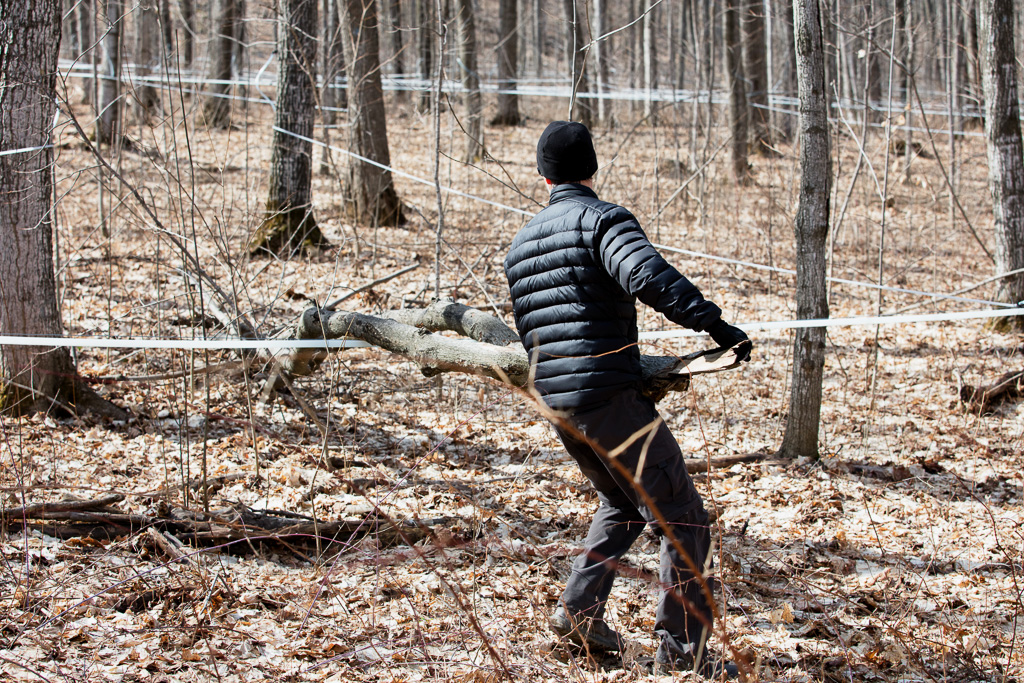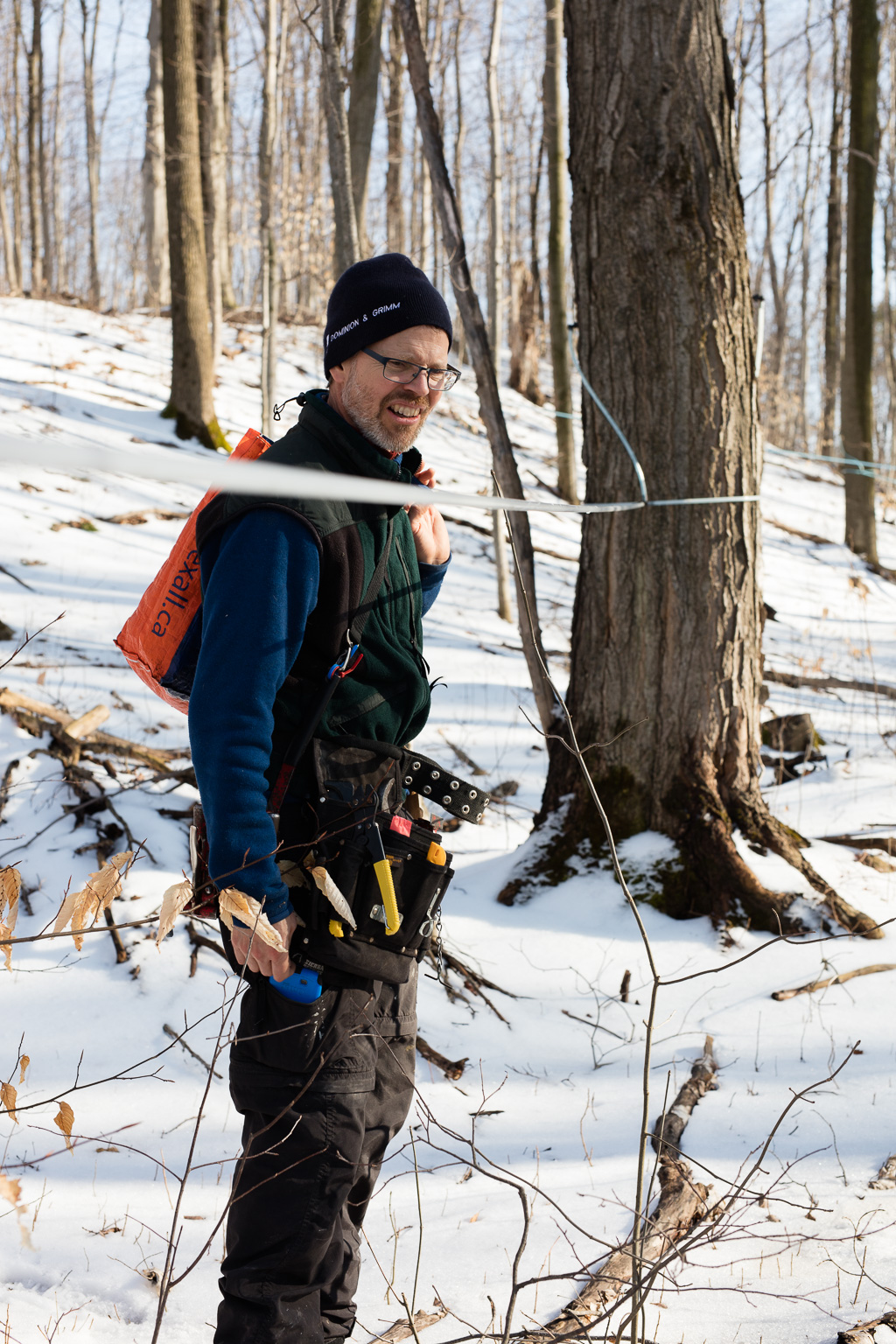In the image above, John Williams inspects sap lines as they approach the lowest point on his farm. I hope John forgives me, but I like to compare him to the Lorax, the Dr. Seuss character who speaks for the trees. Yes, the maple trees yield up something wonderful, but this isn’t a one-sided relationship. If he doesn’t do things for the trees in return, then in the long run they produce less sap. John is something of a tree whisperer whose aim is to strike a balance that ensures the long-term health of the sugar bush.
To that end, John adheres to a number of best practices that promote the health of individual trees and the overall health of the bush. For example, tap holes are, in effect, an injury to the tree in the same way that an injection site is an injury to a person’s skin. Neither is a serious injury, but in both cases you have to take care all the same.
It turns out, the best way to heal a tap hole is not to plug it with something, but to leave it be. Use a sharp bit when drilling the hole. That avoids splitting the inner bark and minimizing the size of the wound. Drill at a slight upward angle so that moisture drains out; otherwise, when residual moisture refreezes, it expands and can potentially split the bark. And remove weak and damaged trees to promote the overall health of the remaining trees, making it easier for them to heal.



